Room Calla in a pot on the windowsill is an excellent alternative to the summer garden. These graceful flowers attach special charm and solemnity to the bedroom interior. If you decide to settle at home such an exquisite plant, like Calla, you will have to follow the special rules for the culture of this culture. We offer you armed with important knowledge so that the cultivation of Calla has become a fascinating occupation for you.
Room Plant Calla, description
- Calla (Other names - whitefall, Richardis) - a herbaceous plant of the family of aroid, whose height varies from 50 cm (for hybrid varieties) to 100 cm (for white callers).
- Bright green leaves of calla have a swamp shape, located on elongated stiffs. In the width of the foliage reaches 8-13 cm.
- Floweros from calla is high, durable. The flower in the culture is formed in the form of a single-ballest funnel, inside which is present in the form of a yellow patch.
- Calla fruit - red berries, sleeping in 3-4 weeks after flowering.
- The flower color can be different: white, scarlet, yellowish, mango, dark purple, bug. Externally, the flower is not distinguished by sophisticated beauty, but depletes an incredibly pleasant fragrance.
- If appropriate care for home caullam is provided, they will delight long flowering, which lasts 1-2 months.
- The natural range of cracking Calla is distant Africa and South America.
When complying with the necessary conditions, calla bloom annually. Even with minor fluctuations in moisture or temperature, the plant still pleases the gaze of its unusual buds.
Room Calla, Views
Although callas are cultivated not so long ago, thanks to the work of breeders a lot of beautiful varieties appeared.
- Calla Elliott - Abundant variety variety with large flowers, which is almost 15 cm. The color of the flowers is unusual: the outer yellow-green part of the leaf canvas contrasts with a bright yellow color of the inner surface. The sheets at the variety are large, the heart-shaped shape, they reach the width of 11 cm. White dots are scattered over the entire surface of dark green foliage. Calla Elliottiana Sveta and prefers abundant watering.
- Calla Ethiopian - Very common in bedroom flowering. She has fleshy foliage growing up to 50 cm long and long rhizome. Aethiopica Calla Hard Drawton is drawn up to 1 m in height, it ends with a white flower-funnel with a pale yellow chick. For the first time, the white room Calla was brought from Ethiopia, so this culture is called Calla Ethiopian.
- Calla remanna - Compact mini-grade, the height of which does not exceed 50 cm. The color of delicate flowers of Calla Rehmannii is different: from pale pink to bright red. It was Calla Red Rooms that became the basis for selection of luxury varieties with a motley color.
- Calla Amethyst - Royal variety with a delicate violent colors and sophisticated marine aroma. The height of the bush, depending on the conditions of cultivation, can be from 50 to 120 cm. Previously, this variety was considered a sign of a higher society and was conquered in the quea of \u200b\u200bqueens.
- Calla Vermeer. - Magnificent duet of decorative foliage with white strokes and satin flower with purple coat, which is bordered by white. Complements the beauty of the variety contrast patch of lemon shade. The variety is low - about 55-70 cm.
Important! Ethiopian Calla is a wild look and refers to rhizuerous cultures. The remaining varieties of Call with multi-colored colors - hybrids, whose root of the tube.
Calla cultivation in room conditions
Calla - comes from the tropics, so the sun and high humidity love. But this does not prevent them from quickly adapting to room conditions. If you bought Calla room, immediately decide on its new residence. Choosing a windowsill, you need to be guided by two criteria: sufficient lighting and heat of air.
Choosing a room for calla room
- Callas prefer multiple sunlight, so in a summer season, the vase is better to have closer to the glass in a half.
- In winter, the lack of light can harm only white callam. If the light is not enough, the plant will not bloom. In winter, Callam requires an 8-hour light mode.
- Lukovichny calla in winter are in the sleep phase. Experienced flowers even advise the bulbs to completely dig up, scroll through the paper and stored in the cold to spring. And since the active vegetation, the "color" calm will need a lot of light (at least 12 hours a day).
Important! Callas are poisonous plants, so they must be kept at a distance from children and domestic pets. By the way, all landing works need to be carried out only in gloves.
Creating a temperature regime for room calla
It should be remembered that behind Calla room care is carried out as a tropical culture. Therefore, it is necessary to maintain the necessary temperature, heat and humidity.
- The level of the required temperature is determined by the season: in summer Callam is comfortable at temperatures from +21 to + 25⁰c, and in winter - from +15 to + 18 ° C.
- Sharp temperatures almost always lead to cessation of flowering, so in the summer the plant can be taken to the balcony, spray the leaves, additionally moisturize the air, and in the winter - placing the vase only in the warm room.
- The level of humidity for white callers should be not lower than 80%, and for "color" - 55-60%. To support moisture, flowers with flowers can be put on the moistened pebble in the pallet.
Room flower Calla, reproduction
Home calla can be multiplied by the seed method, but it is not so easy to do this in fair flower. A more simplified version is the division of rhizomes, which is extremely rarely ends.
Cultivation of the indoor calila of seeds
If you are going to grow calla from seeds, take patience - this path is complex and unreliable, and sometimes you have to wait for a very long time. But if you do this painstaking work to the end and see the long-awaited sprouts, you can consider yourself to be a first-class flower.
The process of growing calila from seeds is happening:
- Seeds are pre-soaked. For this, a solution of a biostimulator is used, for example, potassium humate. Seeds are immersed in liquid for 4-5 hours to provide a high germination that they do not differ.
- While the seeds are processed, prepare the container to dry the sowing material. Summer packaging is suitable or any stand. The selected container is covered with a damp napkin, then laying the seeds, and the top with another napkin.
- Next, the seeds leave for a week in a warm place. Throughout this time, the seeds do not dry, and, if necessary, moisturize the napkin.
- Sprouted seeds are sown in the container with the soil, the greenhouse is built and kept in a warm place until the first germination appears. The soil is regularly moisturized, and the guy ventilate.
- Then the strengthened seedlings are pricted in a potted nourishing soil.
Advice! If the seeds immediately immerse in the soil, they will die, so the neglect of preliminary preparation becomes a big mistake.
Vegetative room reproduction of room
Using the fission of the rhizomes, Ethiopian (white) calla is breed. The reproduction process starts in autumn:
- Rhizome digging out, it should be hard and without signs of rotting.
- With the help of a knife treated with an antiseptic, rhizome is divided into several fragments. Each of them must have root.
- Then each spine is planted in a separate pot. It should be spacious and have holes for water drain.
- Callas are planted into moistened soil, planting depth 6-8 cm.
- The first 7 days the soil do not watered, and only a moderate watering starts onto the second week. Over time, watering increases and add spraying.
- If the pot is placed in direct sunlight, the young plants during pritenyayut sun.
- Since the transplant is carried out in the autumn, winter flowering this season is out and calla blooms only in the second year.
Reproduction of "color" callas occurs differently, because the rootstock hybrids as tubers. Propagated only adult plant, which appeared young bulbs. Pass compartment kids in March:
- Calla tuber dug, gently clean off the ground.
- From tuber separated children, but only those that are easy to come off (the power to tear the bulbs is not necessary).
- Maternal tuber planted back in the old pot and the young tubers are planted in new capacity to a depth of 3 cm Pots choose spacious, ground -. Nutritious and loose.
- Pots with new bulbs are tightened film material, watered infrequently.
- When the first signs of vegetation, the film is removed, and the tuber sprinkled the ground.
planting rules callas room
Planting callas - though laborious, but it is very interesting to do. planting especially in rhizome and bulb callas different, so look at each case individually.
Rules planting rhizome white calla home
- For Ethiopian calla choosing a pot, but not too deep. The optimum width - 20-24 cm.
- First provide 5-centimeter drain to the bottom of the pot is filled with pebbles.
- Primer for room calla selected slightly acidic. Alternatively, you can use the soil for plants Araceae. You can also make your own mixture: ¼ part of superphosphate, ¼ part clay, part sand, part of turf land, a part of humus and two parts leaf land.
- Calla root was immersed to a depth which is equal to the 3rd of its diameter.
- After 20 days, take the first watering and fertilizing.
Features landing "color" bulb callas at home
- Callas dug tubers overwinter in a cool place, and in spring planted in a pot.
- In the first days of March, the tubers put up the heat with good lighting. Conduct periodic hydration tubers.
- Then each tuber planted in a separate pot, its volume should be at least 3 liters. You must also attend the drainage holes at the bottom of the pot.
- The soil can be used the same as for white calla lilies, just to be excluded from the admixture of clay.
- Soil poured into the pot, the top layer is made of sand, which have tubers. Then they are covered with soil at 2-3 cm.
- 16-18 days, the tubers begin watered and fed.
Do you know? The tuber callas bloom every year for 8 years, if they provide them with the relevant conditions.
How to care for indoor calla
If there are comfortable conditions for calla, there are no problems with further departure. All events are reduced to watering, feeding and providing peace regime. True, there are some differences in the care of the tuber and corneser calla.
Room Calla, Watering Mode and Fertilizer
- Ethiopian calves are watered as the top layer of the earth dries. Watering makes abundant to moisturize all the soil to the roots, and then, after 15-20 minutes, the excess water is drained from the pallet.
- Watering the "color" callers spend when the soil slings 4 cm deep into. Water plants along the edge of the vase.
- After the end of blossoming, watering is reduced, and for the tuber Kall, after a month after flowering, watering is completely stopped.
- In the hot season, Callam, except for watering, ensure spraying twice a day.
- Callas quickly increase the root system, which regularly depletes the soil. Therefore, you need to make a fertilizer for calla room. This moment is especially important if the plant lands warm and sunlight.
- You can use absolutely any complex fertilizer for blooming crops. It takes it every 10-15 days. An exception is nitrogen fertilizer - before the start of flowering it is impossible to make it. Excess nitrogen in the phase of vegetation is the cause of the reason why Calla rooms do not bloom.
- So that callas felt the deficit of nutrients, you can feed them with urea. But you need to be careful not to overstat the plants. It is possible to understand that fertilizers are too much in yellow and drying leaves.
Calla during rest
In the spring, after winter blossom, white callas are usually prepared for the rest phase, which lasts throughout the summer. It is possible to understand that the plant is preparing for sleep, it is possible for fading and dying foliage. All leaves should dry themselves, tear or cut them dangerous, because the process of wilting is the migration of the useful substances in the root.
The tuber calla bloom in the summer, and in winter, after flowering, go to rest. They are located indoors with a temperature of + 27⁰s, completely stop irrigated and in a month the asleep tubers dig up. They are sent for storage at a temperature of + 3⁰s. You can store calla in sawdust or screw them with paper.
Calla room, illness
Calla is often amenable to diseases, since it is grown in suitable conditions for bacteria. Among frequently encountered diseases of Calla, the following can be distinguished:
- Gray Gnill - The disease is manifested in the form of a gray plaque on leaves. It occurs during an excess and stagnation. For prevention, the plant should be regularly searched, and when infected - the roots and the above-ground part are treated with potassium permanganate solution. You can also use a fungicide, for example, foundation or vitaros.
- Anthracnose - The disease causes the appearance of brown spots and cracks on the leaves. May develop with improper irrigation or after contact with the affected plant. In preventive purposes, it is recommended to monitor the level of humidity, and if Calla already got sick, it is necessary to remove the affected leaves and process it with a rowerlem.
- Root rot - The root system is amazed by rot, and the above-ground part dry out. The cause of the disease is an excess of nitrogen or incorrect care. Fungicide profit-gold helps to get rid of the disease. So that the disease does not return, it is necessary to displaced the roots and make a good drainage.
- Bacterial rot "If this disease amazes a room call, yellow leaves and gradually rotates all the plant." Disease catalyst - incorrect watering mode or excessive fertilizer application. For treatment, any fungicide can be used, and then strictly adhere to the rules of agrotechnology.
Why the leaves of the room calila yellow
The main problem in the cultivation of Call is the yellowing of foliage. The reasons for this set:
- Phase rest of the plant.
- Moisture deficit, dry air.
- Excessive watering without the necessary drainage.
- Placing callers near the heating device.
- Straight sunlight.
- Use for watering cold water.
- Nutrient deficit or vice versa, too frequent feeding.

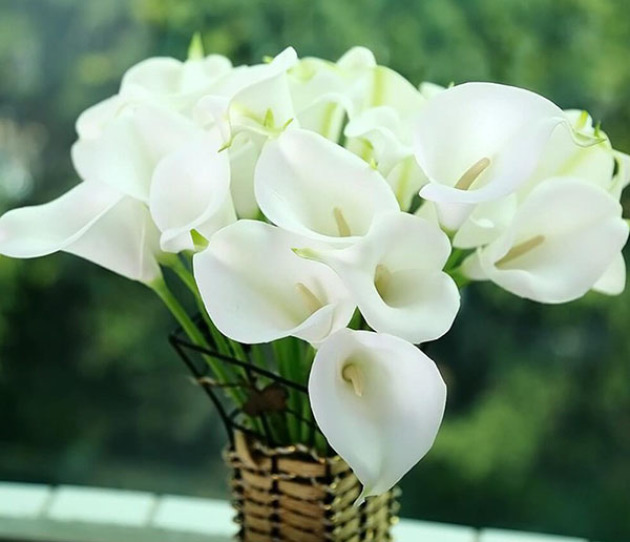
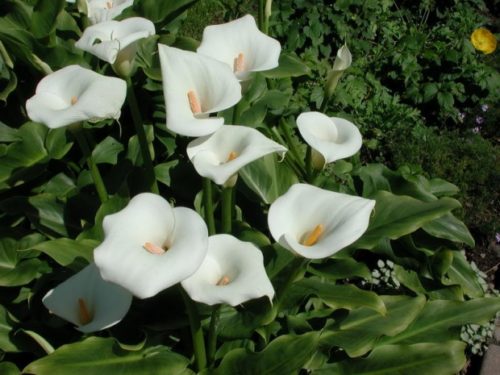

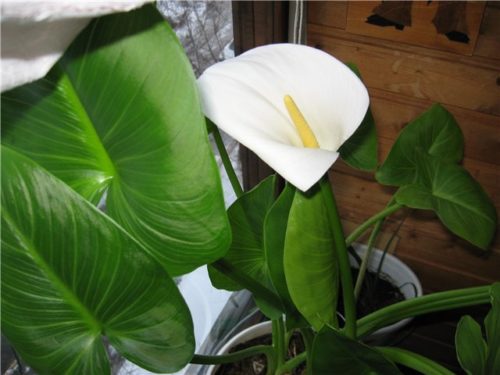
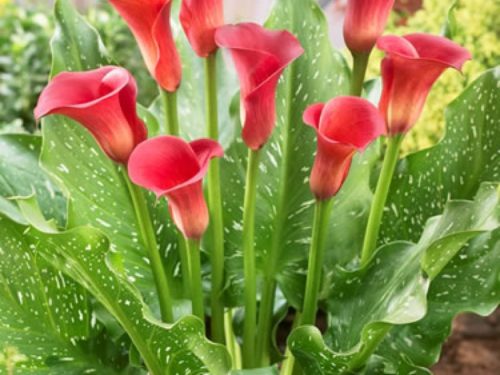
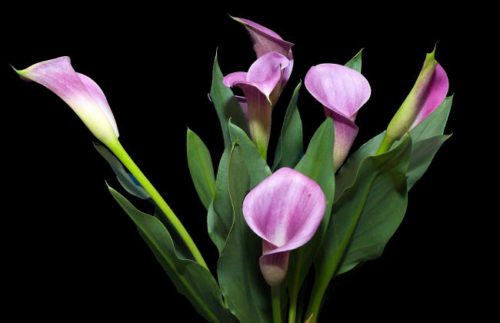
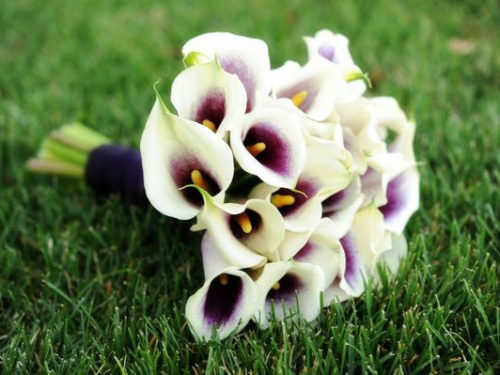
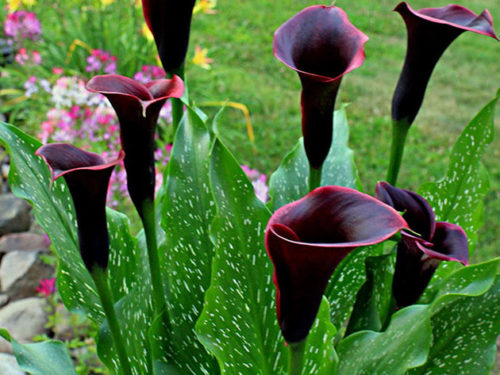
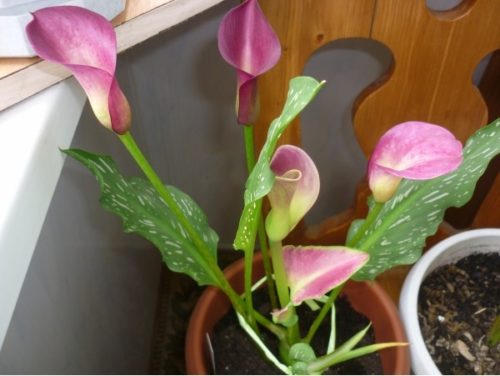
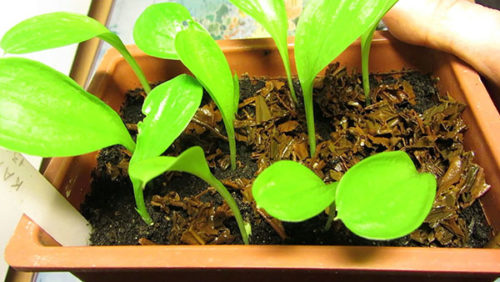
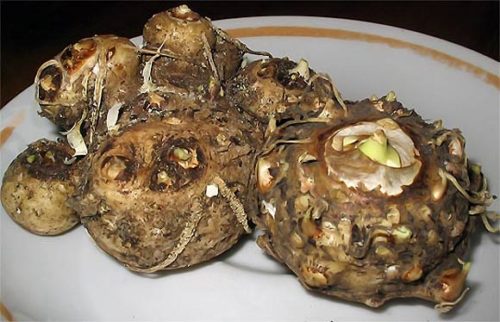

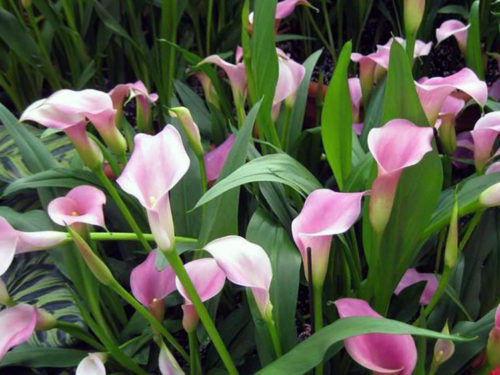
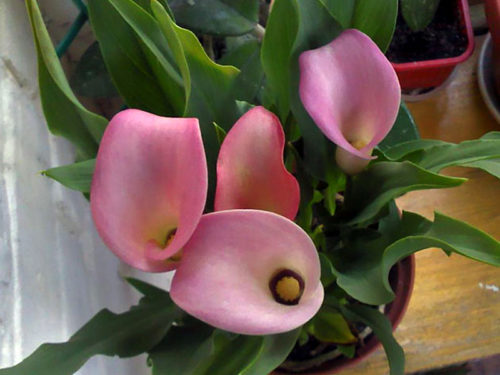

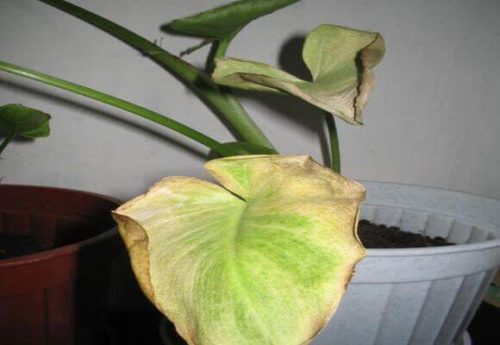
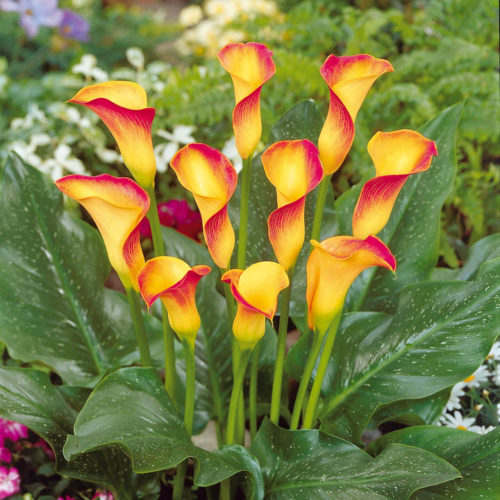
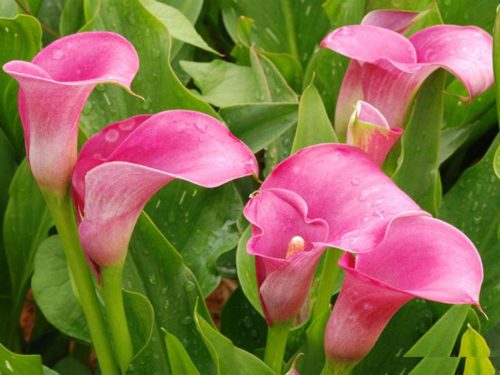

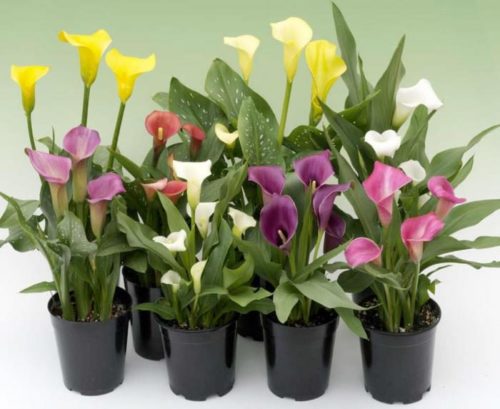












 Start a discussion ...
Start a discussion ...